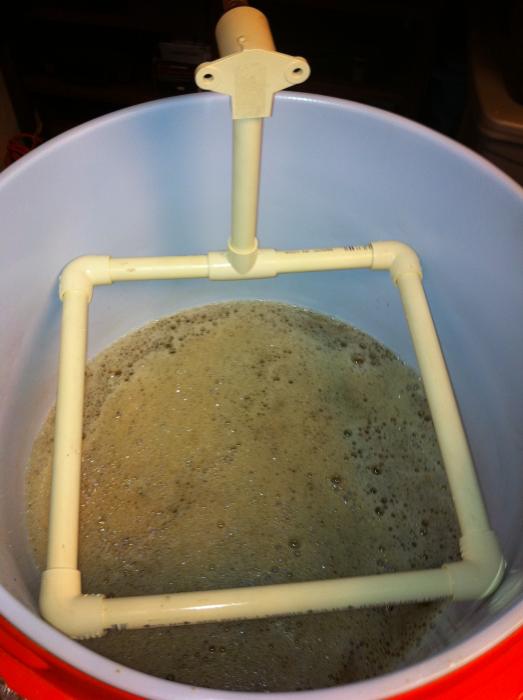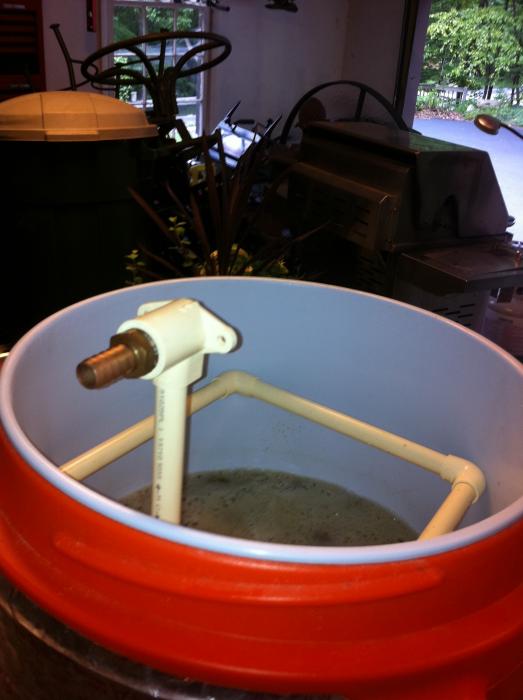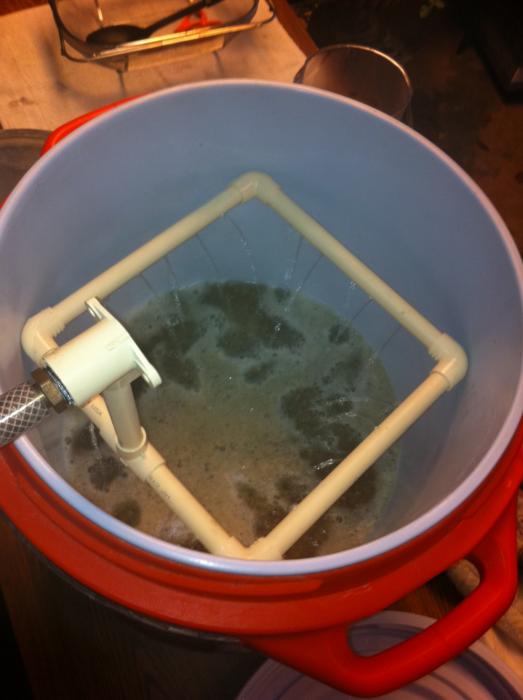nstorm1121
Active Member
Can I drain as fast as I want then? Then this is much quicker than fly sparging, right?

Can I drain as fast as I want then? Then this is much quicker than fly sparging, right?
small tip: put small plate or saucer on top of the grain bed and pour sparge water on it, this way you won't disturb the grain bed even if you pour a bit faster.
CaseyHeartBeers said:So is the overall opinion that you shouldn't use this method with a straight braid in a rectangle cooler?
So is the overall opinion that you shouldn't use this method with a straight braid in a rectangle cooler?
The manifold allows even rinsing of the grain bed. If you try this with a simple straight braid instead, your efficiency will drop due to classic channeling issues. A circular braid will be a bit better. A manifold design is usually quite good and a false bottom typically the best.
Is there something "special" about the "2-3 inch above grain" rule that must be respected?-ben
I haven't started AG yet so I'm trying to understand WHY/HOW fly sparging is more efficient than batch... and after reading this thread, I'm starting to believe that the 2-3 inches IS special.
In most cases the two methods are the same with respect to efficiency. The factor that creates any difference relates to the deadspace in the tun....
In batch sparging the dilution happens in one step (the addition of the sparge after the first draining). But during draining ... there is a certain amount of concentrated wort still in the tun. You add water this dilutes it ... But again ... you leave a percentage of wort behind (which is now diluted of course). This small loss does't happen with this setup in fly mode.
Sorry but If the efficiency gain is only attributable to drainage....
Surely, if the two methods are equal in efficiency and the perceived gain was solely due to concentrated wort left in the tun, then all has to be done is to remove the grain and drain the remaining concentrated wort through a coffee filter. Similarly, we all might as well do BIAB where there is no deadspace at all.
Efficiency gain is not attributable to drainage. Thats not what I am saying. Efficiency loss in a batch sparge set up IS entirely dependent on drainage and deadspace.

Just updated the original post with a quick video of my ugly bucket in action.



Zacher that is sweet! I wants one.
Weekend project, here I come!
I use a IPhone App called Sparge Pal to calculate Mash Water amounts and temp.
There are online tools also
http://www.appolicious.com/tech/apps/60020-sparge-pal-david-parker
BierMuncher: I happen to sparge the same way. I was wondering why my attenuation was suddenly lower when I started doing this. You mentioned that your your attenuation is lower with the longer rest time. Can you help me understand why?
Enter your email address to join: